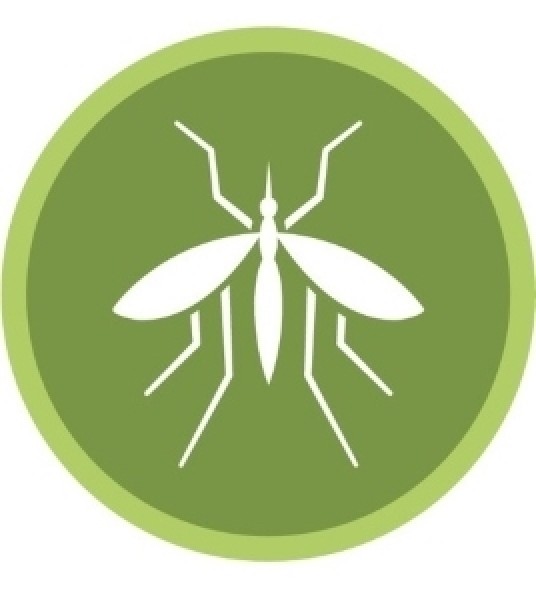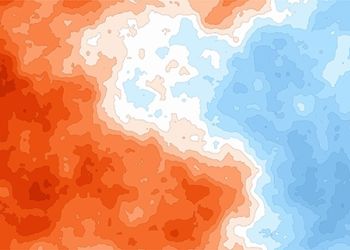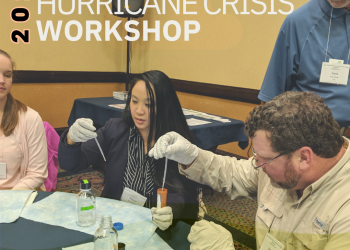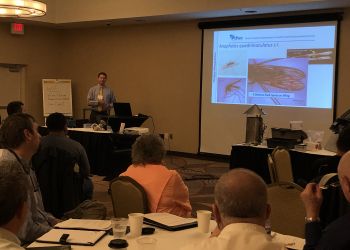Health departments across the country are limiting or shuttering services due to the COVID-19 outbreak. The National Association of County and City Health Officials (NACCHO), representing the country’s nearly 3,000 local health departments, spoke with members of its Vector Control Collaborative and Vector Control Workgroup about the impact of COVID-19 on their ability to conduct activities that combat mosquito- and tick-borne diseases. The COVID-19 response has taken time, attention, and personnel away from all other unrelated health priorities, as already- underfunded and understaffed health departments respond to this pandemic. In doing so, existing services are strained or paused, with health impacts that will ripple through communities.
These impacts come at a challenging time. Local health departments and other vector control programs are working to combat historically high vector-borne disease rates. As temperatures rise well above 50 degrees throughout much of the country, mosquito and tick populations increase, meaning many Americans are at a greater risk for vector-borne illness. Mosquitoes and ticks are more than just a nuisance, they can spread deadly diseases and pose a serious public health threat. Tickborne diseases hit a record high in the United States in 2017 with nearly 60,000 reported cases, including 42,743 cases of Lyme disease. Cases decreased in 2018, but are still significantly higher than they were in the early 2000s.[1]
West Nile virus is the leading cause of domestically acquired mosquito-borne disease in the continental U.S. In 2018, 48 states and the District of Columbia (DC) reported 2,813 cases of domestic arboviral disease, including 2,647 (94%) West Nile virus disease cases.[2] Other diseases, including eastern equine encephalitis, Jamestown Canyon, La Crosse, Powassan, and St. Louis encephalitis viruses, cause sporadic cases of disease and occasional outbreaks. Shockingly, states that have experienced outbreaks in vector-borne disease in the past year have had their local vector programs deemed nonessential during the COVID-19 pandemic, halting surveillance and control activities that can detect or prevent vector-borne disease threats before they affect the community.
At the same time, local health departments are still dealing with budget and staffing cuts from the 2008 recession, when they lost nearly a quarter of their workforce, while leading on the front lines of the COVID-19 response that is having an impact on every community in the country. Vector programs we spoke with noted they have been experiencing varying levels of impact from COVID-19 to their routine operations, ranging from minimal impact to entire vector programs being deemed non-essential and shut down, or large portions of staff being realigned for COVID-19 response.
Additional impacts include:
- Reduced or suspended services and activities, often because staff are pulled away to focus on COVID-19 response.
- Shuttered outreach, education, and prevention efforts due to implementing social distancing guidelines and lack of staff.
- Hindered ability to bring on temporary staff or interns. Many vector organizations rely on seasonal hires to support mosquito season trapping and control during the warmer months.
- Limited ability to test mosquito samples for disease due to decreased lab capacity from COVID-19 surge. For some, this means longer wait times for results, only being able to test select mosquitoes, or having to find testing alternatives to their jurisdictional or state labs entirely.
- Prioritization of PPE for COVID-19 is leading to supply shortages in vector programs, as N95 masks are also used for chemical control applications.
- Delta Vector Control District (DVCD) – COVID-19 Daily Operation Guidelines: This document outlines modifications that the DVCD has made to its daily operations in order to curb the spread of COVID-19, while continuing to provide the essential service of protecting their communities from mosquitoes and mosquito-borne disease.
Despite the workforce and resource challenges, these programs are finding ways to adapt and fulfill their critical public health function while still maintaining social distancing. These include:
- Ramping up the dissemination of educational materials to their communities through various media outlets (social media, radio, etc.).
- Using mapping tools to look at mosquito habitat and prioritizing efforts in areas where the most good can be done for the greatest number of residents.
- Focusing surveillance efforts on the areas that have historically yielded positive pools of specimens.
- Establishing a statewide collective of vector control professionals to discuss strategies in maintaining program operations and navigating the challenges brought by COVID-19.
- Equipping vector program personnel to set and collect surveillance traps from home.
NACCHO has compiled a list of resources from its partners and members to assist vector control programs in navigating this challenging time. These resources are highlighted below.
- Arkansas Department of Health – Transmission of COVID-19 by Ticks and Mosquitoes: This memo provides guidance to the general public regarding the transmission of COVID-19 by Ticks and Mosquitoes.
- Arkansas Department of Health – Guidance on COVID-19 for Pest Management Professionals: This guidance provides recommendations that technicians, managers, and other pest management industry professionals can take to reduce transmission of COVID-19.
- Association of State and Territorial Health Officials (ASTHO) – Optimizing PPE supplies with Decontamination and Reuse: This brief provides key considerations, resources, and examples for states and territories considering PPE decontamination and reuse in healthcare facilities.
If you have any questions about these tools or would like to submit a tool of your own to the Vector Control Toolkit, please contact the NACCHO Vector Control Program at [email protected].
More resources on vector surveillance and control can be found by searching the Vector Control Toolkit in the NACCHO Toolbox. The NACCHO Toolbox is a free, online collection of public health tools that have been created and shared by members of the public health community. To view the Vector Control Toolkit, visit the NACCHO Toolbox and select “Vector Control Toolkit” from the dropdown menu.
For more details on NACCHO’s response to COVID-19, see its COVID-19 information page. If you would like to share how the COVID-19 response is affecting your local vector control program, please submit your stories on this short form: https://www.naccho.org/programs/coronavirus. This feedback is critical to our work to advocate on your behalf. Thank you.
___________________________________________________________
[1] CDC. Ticks. Tickborne Disease Surveillance Data Summary webpage. Retrieved March 9, 2020, from https://www.cdc.gov/ticks/data-summary/index.html
[2] McDonald E, Martin SW, Landry K, et al. West Nile Virus and Other Domestic Nationally Notifiable Arboviral Diseases — United States, 2018. MMWR Morb Mortal Wkly Rep 2019;68:673–678. DOI: http://dx.doi.org/10.15585/mmwr.mm6831a1.
Read the full press release below






